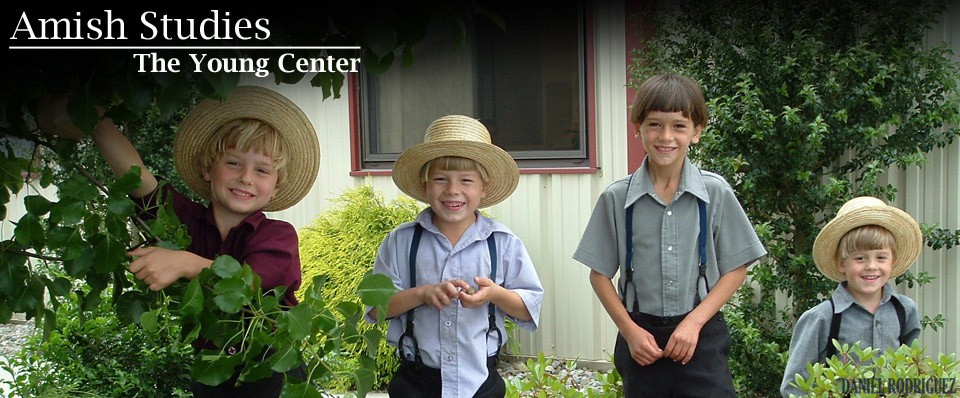Religious Rituals
Two important religious rituals in Amish life are baptism and communion.
As Anabaptists, the Amish place supreme importance on adult baptism. Those who take the baptismal vow commit themselves to following the ways of Jesus and upholding the Ordnung of the church for life. Most young people take their baptismal vows between 18 and 22 years of age, during a Sunday morning service that follows several weeks of instruction for the candidates. The decision to join the church is the big decision for Amish youth. This lifelong promise before God and the members of their community means that they will be accountable to the church for the rest of their lives. If they renege on their vows and stray from the church, they face excommunication and shunning. On the other hand, if they leave the community before baptism, they will not face any formal sanctions because the Amish respect an individual’s voluntary decision regarding church membership.
Communion services, held each autumn and spring, frame the religious year. These ritual high points emphasize self-examination and spiritual rejuvenation. Members confess their sins and reaffirm their vow to uphold the Ordnung at a council meeting held prior to the communion service. Communion is held when the congregation is “at peace”; that is, when all members are in harmony. The eight-hour service includes preaching, a light meal during the service, and the commemoration of Christ’s death with bread and wine. Pairs of members wash each another’s feet as the congregation sings. At the end of the service, members give an alms offering to the deacon. This is the only time that offerings are gathered in Amish services.
Additional information
- See chapter 5, “Sacred Rituals,” in Donald B. Kraybill, Karen M. Johnson-Weiner, and Steven M. Nolt, The Amish (Baltimore: Johns Hopkins University Press, 2013).
- See chapter 5, “Rites of Redemption and Purification,” in Donald B. Kraybill, The Riddle of Amish Culture. 2nd ed. (Baltimore: Johns Hopkins University Press, 2001).
- See chapter 9, “The Practice of Forgiveness,” in Donald B. Kraybill, Steven M. Nolt, and David L. Weaver-Zercher, Amish Grace: How Forgiveness Transcended Tragedy (San Francisco: Jossey-Bass, 2007).
